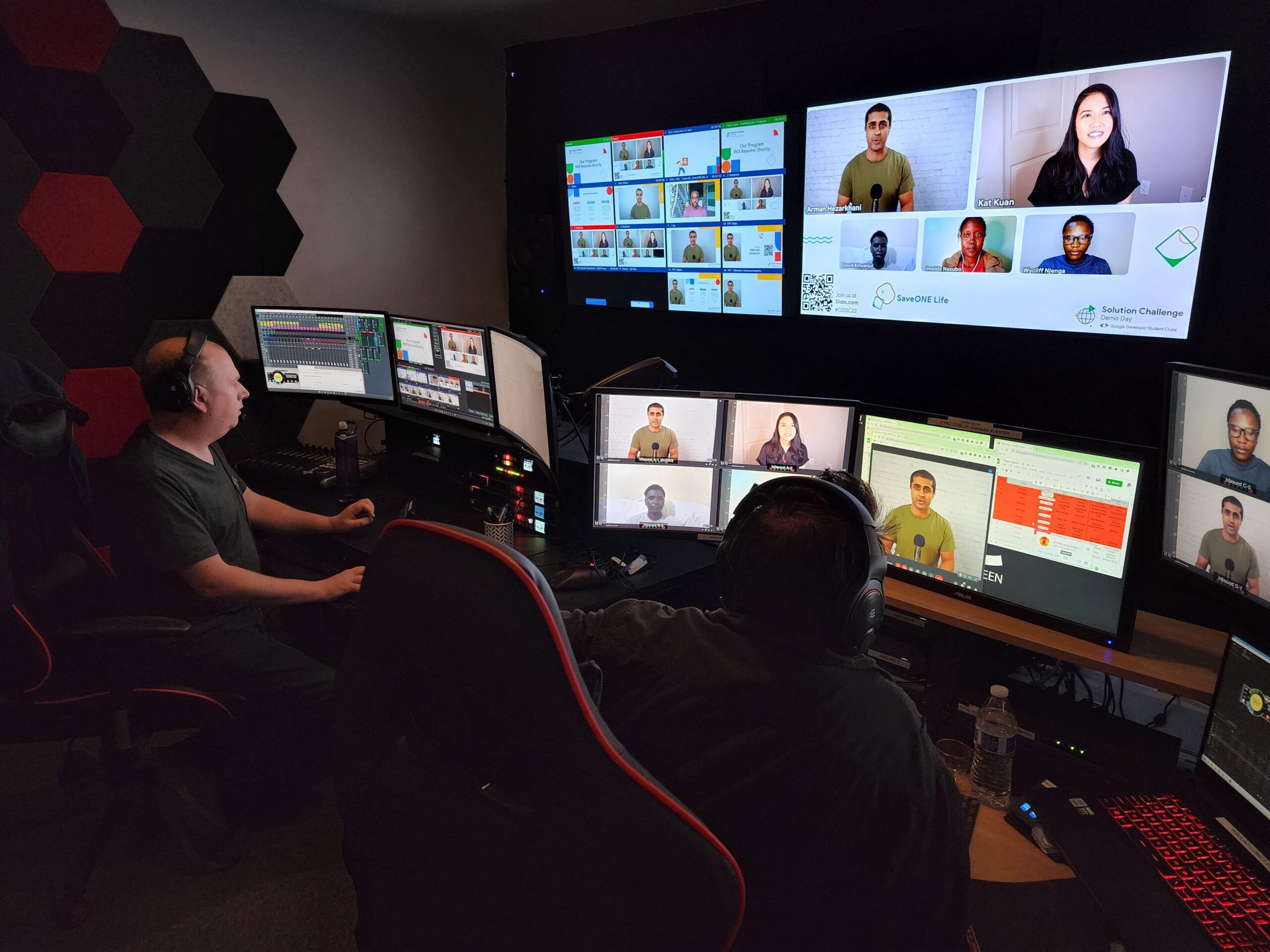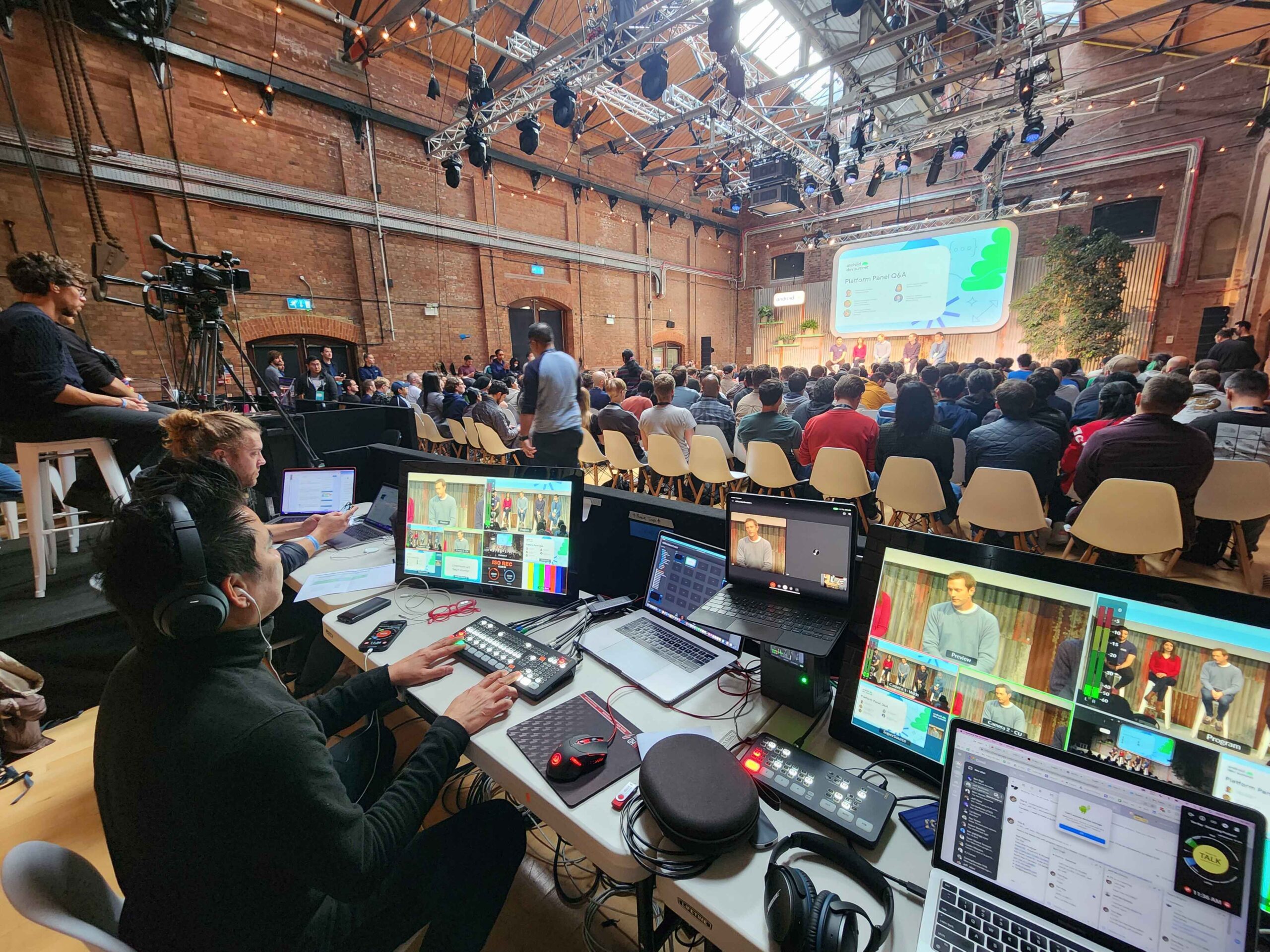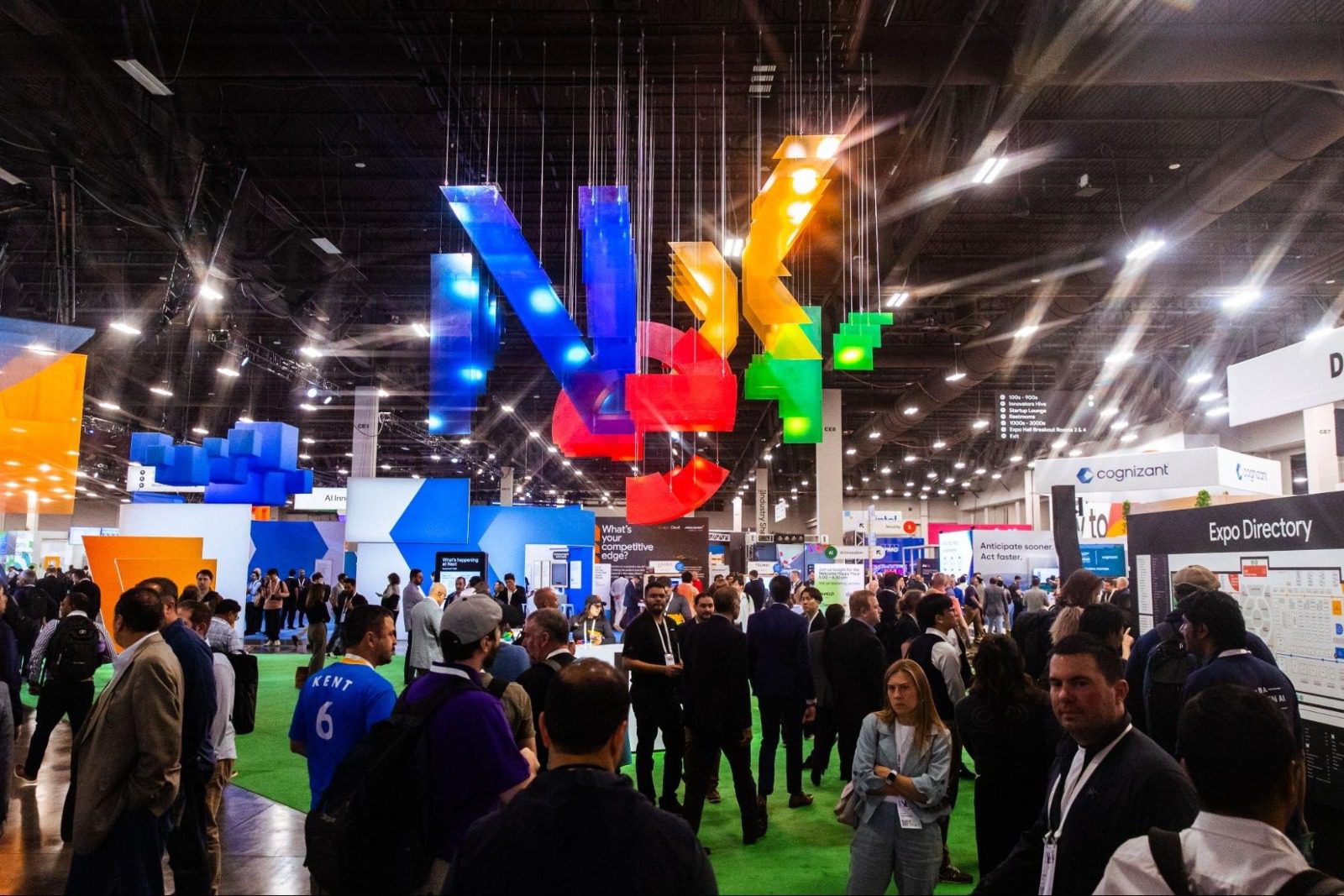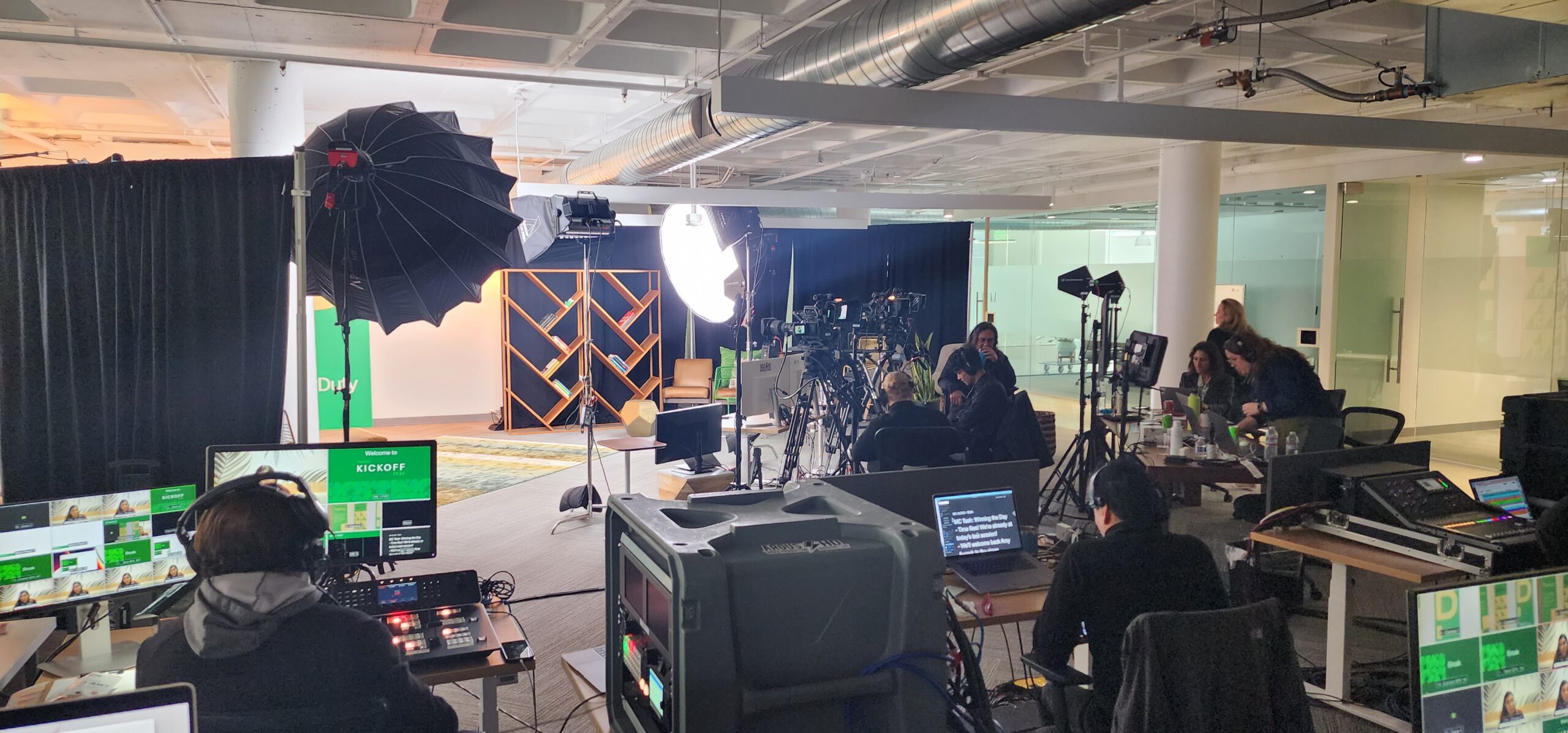The Future of Audio/Visual Technology in Sporting Events, Ceremonies & Beyond
Audiovisual technology is changing how people enjoy sports and live events. Technologies make entertainment more fun and interactive. High-resolution screens are making visuals clearer and more detailed in stadiums and arenas.
AI is helping improve experiences for fans in the stadium and during online broadcasts. A/V technology in sporting events helps create exciting environments for fans.
This blog explores how technologies are changing sporting events, ceremonies, and live experiences. This makes them more engaging for everyone.
The Evolution of A/V Technology in Sporting Events
A/V installation for sports arenas has improved over the years. It gives fans better sound and visuals for a great experience. In the past, events used simple screens and speakers.

Today, we have high-definition screens, surround sound, and live streaming. These changes make events more exciting for everyone.
In the future, sports event lightning systems will improve. It will make events more interactive and fun. People will enjoy events in new and exciting ways. They can experience them both in person and online.
High-Quality Displays and LED Screens
Modern events use big LED screens for sports venues and high-definition displays for clear visuals. These screens show live replays and player stats. Some stadiums now have 8K screens. This offers the best view from any seat.
LED technology also helps create amazing stage designs for concerts and ceremonies. For everyone attending or seeing, this makes the event more exciting and relaxing.
Augmented Reality (AR) and Virtual Reality (VR)
AR and VR are making live experiences more interactive. Fans can use AR apps to see player stats by pointing their phones at the field. VR allows people to experience games from home as if they are in the stadium.
Olympic events use VR to make fans feel like they’re in the front row, no matter the distance. Virtual reality is used to enable virtual attendance at concerts and live performances. This makes it easier for everyone to enjoy the entertainment from anywhere.
Immersive Audio Technology
High-quality audio makes live events better. 3D audio and spatial sound create realistic experiences. Everyone in the stadium can hear because of the directional speakers.

Wireless audio technology helps sync sound in big places. This improves both live and broadcast events. These technologies help fans feel more involved and enjoy events in a whole new way.
AI and Real-Time Data Integration
The use of A/V technology is being enhanced by artificial intelligence. Cameras with AI capabilities can track players and offer real-time information. Smart algorithms analyze crowd reactions to adjust screen content.
Additionally, AI improves quick replays by creating 3D reconstructions of major incidents. AI can adjust lighting and graphics during live concerts. It changes them based on how the audience participates.
Drone Technology for Aerial Coverage
Drones have changed our viewing of events, including sports and ceremonies. Exciting views from the air that standard cameras cannot grab can be captured by them. Live aerial images from drones give programs extra appeal.
Opening ceremonies also include them to provide incredible visual effects. These factors make events more fun for people watching at home. They also improve the experience for those at the event location.
Holograms and 3D Projection Mapping
The entertainment industry is evolving with the use of holograms and 3D projection mapping. In sports, holograms help show replays and analyze the game.
3D projection mapping creates stunning visuals on stadiums. This makes the experience more exciting. These technologies make opening ceremonies and concerts more interesting.
They grab the attention of people at the event and those watching on TV. This adds more fun and excitement for everyone involved.
Smart Stadiums and IoT Integration
Smart stadiums enhance the fans experience using stadium A/V equipment and IoT. They manage crowds and adjust lighting and sound using real-time data.
Fans can use apps to check live stats and watch replays. They can also order food and drinks without leaving their seats. This technology makes events more personalized and enjoyable for everyone.
Live Streaming and Cloud Broadcasting
Sports event live-streaming technology helps people watch events from anywhere. While, cloud-based sports broadcasting technology makes viewing easier and more accessible for everyone.

These technologies are helping people around the world access events in real time. The superior quality video streaming ensures a smooth, and delay-free experience.
AI video compression helps reduce buffering during video playback. Social media helps A/V broadcasting reach a larger audience.
5G and Low-Latency Streaming
5G technology is transforming how live events are streamed. High-speed connections provide instant updates with minimal delays. Low-latency streaming allows real-time engagement.
It helps in enhancing interactive fan experiences. This is especially useful for sports betting and live audience participation during events.
Sustainable A/V Solutions
AV technology keeps valuing sustainability. Energy-efficient LED screens consume less power. Solar-powered A/V equipment helps reduce carbon footprints.
Event production technology for sports now uses recyclable materials. This helps create displays and sound systems that are better for the environment. Green technology is shaping the future of A/V innovation while minimizing environmental impact.
AI-Generated Commentary and Subtitles
AI is revolutionizing event commentary and accessibility. AI-powered voice synthesis provides real-time, multilingual commentary.
Automated subtitles make sports and ceremonies accessible to international audiences. This technology offers variety and enhances fans’ experience all around.
The Future of A/V Technology in Sporting Events
The future of A/V technology will bring many new technologies. We can see fully holographic sports broadcasts, where fans can experience games in 3D. AI and machine learning will make viewing experiences more personal. They will adjust content based on what each viewer likes.
Smart stadiums will become more interactive. Fans will enjoy more exciting ways to engage with the event. Sports and ceremonies will be more exciting for people at the stadium. Fans watching from home will also feel more involved.
Conclusion
Audio/visual solutions for sports events are changing how we enjoy sports and live events. High-quality screens and AI make experiences better. Fans can now feel more involved and excited, no matter where they are.
These new technologies help create fun and interactive events. In the future, AV technology in sporting events and ceremonies will keep getting better.
It will make events more exciting for everyone. Fans can enjoy them, whether they are at the event or watching online.
FAQs
What role does AI play in audiovisual technology for events?
AI helps create instant replays and analyzes crowd behavior during events. Real-time subtitles and graphic changes depending on audience reaction also help here.
How is VR changing the way we experience live events?
VR lets fans watch games and concerts from home. It gives an all-around view, making fans feel like they’re in the front row.
Which recent advances in audiovisual technology for games are under development?
3D holograms, projection mapping, and 8K live streaming are among the newest trends. These features make the audience more engaged, both in the stadium and online.
What is 360-degree video technology in sporting events?
360-degree video gives a wide view of the event. Viewers can choose different angles to make the experience more exciting.
What is the future of sound technology in sports arenas?
The future of sound in sports arenas will use special sound systems that focus on certain areas. These systems will create better audio experiences. This makes fans feel more engaged and part of the action.
What challenges come with using AV technology in live sports event sound systems?
The main challenges are high costs and technical problems. It is also hard to avoid sound delays and keep audio clear in big, noisy stadiums.


